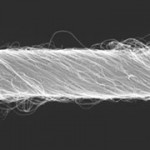Archive for Декабрь 11th, 2006
Improvement and Assessment of Motor Rehabilitation with Control Engineering Methods
- Тип контента: Научная статья
- Номер документа: 6700
- Название документа: Improvement and Assessment of Motor Rehabilitation with Control Engineering Methods
- Номер (DOI, IBSN, Патент): Не заполнено
- Изобретатель/автор: Michael Bernhardt, Heike Vallery, Herman van der Kooji, Martin Buss, Albrecht Struppler
- Правопреемник/учебное заведение: Institute of Automatic Control Engineering Technische Universität München, Research Group for Sensorimotor Integration Klinikum rechts der Isar Technische Universität München, Laboratory of Biomechanical Engineering, University of Twente
- Дата публикации документа: 2006-12-11
- Страна опубликовавшая документ: Германия
- Язык документа: Английский
- Наименование изделия: Не заполнено
- Источник: Не заполнено
- Вложения: Да
- Аналитик: Глаголева Елена
 Two medical engineering projects will be presented that are in the field of motor rehabilitation after stroke. The first project focuses on the restitution of hand and finger movements. The concept is the generation of proprioceptive afferent input by position controlled muscle stimulation. As innovative stimulation method the Repetitive Peripheral Magnetic Stimulation (RPMS) is used. Secondly, a novel control method (Complementary Limb Motion Estimation, CLME) for automated treadmill training for hemiparetic patients is presented. CLME deduces reference motion for the impaired limbs based on the contra-lateral leg. This method aims to increase the patient’s involvement and dominance during rehabilitation, while the robot acts as an assistive slave.
Two medical engineering projects will be presented that are in the field of motor rehabilitation after stroke. The first project focuses on the restitution of hand and finger movements. The concept is the generation of proprioceptive afferent input by position controlled muscle stimulation. As innovative stimulation method the Repetitive Peripheral Magnetic Stimulation (RPMS) is used. Secondly, a novel control method (Complementary Limb Motion Estimation, CLME) for automated treadmill training for hemiparetic patients is presented. CLME deduces reference motion for the impaired limbs based on the contra-lateral leg. This method aims to increase the patient’s involvement and dominance during rehabilitation, while the robot acts as an assistive slave.
Категория: Научные статьи | 1 Комментарий »
Созданы сверхсильные мышцы из нанопряжи
- Тип контента: Новостная статья
- Номер документа: 2229
- Название документа: Созданы сверхсильные мышцы из нанопряжи
- Номер (DOI, IBSN, Патент): Не заполнено
- Изобретатель/автор: Не заполнено
- Правопреемник/учебное заведение: Не заполнено
- Дата публикации документа: 2006-12-11
- Страна опубликовавшая документ: Россия
- Язык документа: Русский
- Наименование изделия: Не заполнено
- Источник: http://www.membrana.ru/particle/10954
- Вложения: Не заполнено
- Аналитик: Ридна Украина)))
 Исследователи из института нанотехнологий при Техасском университете в Далласе (Nanotech Institute at the University of Texas at Dallas — NIUTD) создали искусственные мышцы, которые в сто раз сильнее обыкновенных «природных». Для этого учёные использовали необычный материал — пряжу из углеродных нанотрубок.
Исследователи из института нанотехнологий при Техасском университете в Далласе (Nanotech Institute at the University of Texas at Dallas — NIUTD) создали искусственные мышцы, которые в сто раз сильнее обыкновенных «природных». Для этого учёные использовали необычный материал — пряжу из углеродных нанотрубок.
Категория: Двигатели | Нет комментариев »
Locomotive Control of a Wearable Lower Exoskeleton for Walking Enhancement
- Тип контента: Научная статья
- Номер документа: 3972
- Название документа: Locomotive Control of a Wearable Lower Exoskeleton for Walking Enhancement
- Номер (DOI, IBSN, Патент): 10.1177/1077546306070616
- Изобретатель/автор: Xiaopeng Liu, Low, K.H., Haoyong Yu, C. H. Goh
- Правопреемник/учебное заведение: Sch. of Mech. & Aerosp. Eng., Nanyang Technol. Univ., Singapore, Singapore
- Дата публикации документа: 2006-12-01
- Страна опубликовавшая документ: Сингапур
- Язык документа: Английский
- Наименование изделия: Не заполнено
- Источник: http://jvc.sagepub.com/content/12/12/1311.abstract
- Вложения: Нет
- Аналитик: Helix
 This article presents a wearable lower extremity exoskeleton (LEE) designed to augment the ability of a human to walk while carrying payloads. The ultimate goal of the current research is to design and control a wearable power-assisted system that integrates a human’s intellect as the control command. The system in this work consists of an inner exoskeleton and an outer exoskeleton. The inner system measures the movements of the human and controls the outer system, which follows the human movements and supports the payload. A special foot-unit was designed to measure the zero moment points (ZMPs) of the human and the exoskeleton simultaneously. Using the measured human ZMP as the reference, the exoskeleton’s ZMP is controlled by trunk compensation to achieve stable walking. A COTS program, xPC Target, together with toolboxes from MATLAB, were used as a real-time operating system and integrated development environment, and real-time locomotion control of the exoskeleton was successfully implemented in this environment. Finally, some walking experimental results, by virtue of the ZMP control for the inner and outer exoskeletons, show that the stable walking can be achieved.
This article presents a wearable lower extremity exoskeleton (LEE) designed to augment the ability of a human to walk while carrying payloads. The ultimate goal of the current research is to design and control a wearable power-assisted system that integrates a human’s intellect as the control command. The system in this work consists of an inner exoskeleton and an outer exoskeleton. The inner system measures the movements of the human and controls the outer system, which follows the human movements and supports the payload. A special foot-unit was designed to measure the zero moment points (ZMPs) of the human and the exoskeleton simultaneously. Using the measured human ZMP as the reference, the exoskeleton’s ZMP is controlled by trunk compensation to achieve stable walking. A COTS program, xPC Target, together with toolboxes from MATLAB, were used as a real-time operating system and integrated development environment, and real-time locomotion control of the exoskeleton was successfully implemented in this environment. Finally, some walking experimental results, by virtue of the ZMP control for the inner and outer exoskeletons, show that the stable walking can be achieved.
Категория: Ищем научные статьи | Нет комментариев »
Статистика
Категорий: 179
Статей всего: 2,003
По типу:
Видео: 36
Выдержка с форума: 1
Контактные данные: 12
Научная статья: 1388
Не заполнено: 5
Новостная статья: 317
Обзор технологии: 42
Патент: 219
Тех.подробности: 34
Тип: 1
Комментариев: 6,248
Изображений: 3,005
Подробней...
ТОР 10 аналитиков
-
Глаголева Елена - 591
Дмитрий Соловьев - 459
Helix - 218
Ридна Украина))) - 85
Наталья Черкасова - 81
max-orduan - 29
Елена Токай - 15
Роман Михайлов - 9
Мансур Жигануров - 4
Дуванова Татьяна - 3
Календарь
Авторизация
Ошибка в тексте?
Выдели её мышкой!
И нажми Ctrl+Enter